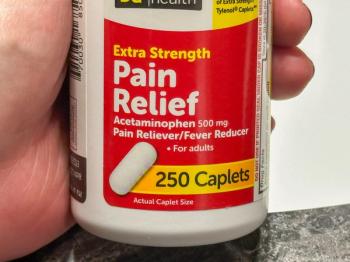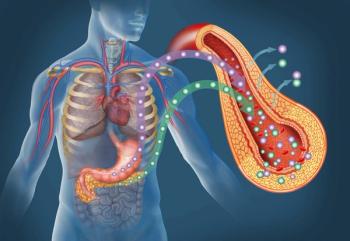
Using Morphine in Acute Myocardial Infarction: A Potential Mistake?
Morphine and Ticagrelor Drug Interaction
The backbone of pharmacologic treatment of acute myocardial infarction (AMI) includes mitigating the oxygen supply and demand mismatch, which leads to myocardial necrosis. Agents used in in the acute management of these patients include nitrates, antiplatelets including aspirin and P2Y12 antagonists, anticoagulation, beta blockers, and often times, morphine for pain control.
Morphine use in AMI has 2 main mechanisms. First, morphine blunts the
Guidelines recommend use of dual antiplatelet therapy for 12 months after index event in all patients with AMI regardless of stent placement.1,2 For P2Y12 antagonists, guidelines currently recommend ticagrelor use over clopidogrel in patients who undergo early revascularization with a 1B recommendation.
Previous literature has demonstrated reductions in plasma clopidogrel levels, a delayed time to peak maximal inhibition, and reduced antiplatelet activity in patients taking clopidogrel and receiving concomitant IV morphine.3
Consequently, patients given morphine for non-ST segment myocardial infraction (NSTEMI) had higher mortality than those patients not given morphine.4 It cannot be inferred that morphine may be the only reason for the mortality difference, however, as these patients may have been more ill. The mechanism for this interaction is thought to result from reduced gastric emptying caused by opioids leading to a reduced time to absorption and activation of clopidgrel to active drug.5
Ticagrelor is a more potent antiplatelet agent compared to clopidogrel and does not need hepatic activation to form an active drug. The use of ticagrelor, thus, was hypothesized to be able to overcome this interaction.
Hobl and colleagues tested 24 healthy subjects in a randomized, double-blind, placebo-controlled, crossover trial.5 Subjects received ticagrelor 180 mg in combination with placebo or 5 mg of IV morphine. Patients were crossed over in the study 14 days after the first dose administration to ensure an appropriate washout. In these healthy patients, morphine use prolonged maximal concentration time for ticagrelor (Tmax: 180 vs. 120 min, P = .016) and ticagrelor’s active metabolite (240 vs. 180 min, P = .023). The Cmax of ticagrelor and the active metabolite were significantly reduced as was the area under the curve (AUC) by 22% and 23%, respectively. Interestingly, whole blood aggregation or platelet plug formation was unaffected by morphine in these patients. Although the pharmacokinetic parameters of ticagrelor were impacted by morphine, it seemed the drug at a dose of 180 mg was able to overcome those effects and still exert significant antiplatelet properties up to 6 hours after a morphine dose.
Kubica and colleagues studied this interaction in an AMI population and found similar results compared to the healthy volunteers in the IMPRESSION trial.7 IMPRESSION was a single center, randomized, double-blind, placebo-controlled trial that evaluated 70 patients, 35 in each cohort. Patients with STEMI or NSTEMI were randomized to receive morphine 5 mg IV or placebo followed by a ticagrelor loading dose of 180 mg. Patients who complained of unbearable severe pain were excluded as they all received morphine based on standard of care practices.
Patients in the morphine group compared to placebo has a 36% and 37% reduction in total drug exposure for active ticagrelor and it metabolite, respectively. Maximum plasma ticagrelor concentrations were significantly delayed in the morphine group compared to placebo (4 h vs. 2 h, P = .004). Finally, multiple platelet activity studies showed reduced platelet activity in the placebo arm compared to morphine. Clinically, 1 patient in the morphine group had stent thrombosis compared to none in the placebo group. Conversely, more patients in the placebo arm had bleeding events.
The results of the above studies seem to suggest that morphine administration in conjunction with ticagrelor may lead to precipitation of damaging clinical events based on the pharmacokinetic and pharmacodynamics results found. However, until large scale randomized studies evaluating pharmacokinetics, pharmacodynamics, and most importantly, clinical endpoints are completed with the use of morphine in AMI , the discontinuation of morphine use in this patient population is unlikely. It would be prudent to also consider the doses of morphine being administered in these trials and the time from administration of morphine and ticagrelor which warrant further investigation.
Clinicians treating patients with AMI should be aware of this interaction and monitor patients who have received morphine and ticagrelor for any signs of stent thrombosis closely. All the while remembering that the use of antiplatelet agents in AMI has shown mortality and morbidity benefits in multiple trials. That has not yet occurred with the use of morphine in AMI.
References
1. O’Gara PT, Kushner FG, Ascheim DD, et al. 2013 ACCF/AHA guideline for the management of ST-elevation myocardial infarction: a report of the American College of Cardiology Foundation/American Heart Association Task Force on Practice Guidelines. Circulation. 2013;127:e362—425.
2. Amsterdam EA, Wenger NK, Brindis RG, et al. 2014 AHA/ACC guideline for the management of patients with non-ST-elevation acute coronary syndromes: executive summary: a report of the American College of Cardiology/American Heart Association Task Force on Practice Guidelines. Circulation. 2014;130(25):2354-2394.
3. Hobl EL, Stimpfl T, Ebner J, et al. Morphine decreases clopidogrel concentrations and effects: a randomized, double-blind, placebocontrolled trial. J Am Coll Cardiol. 2014;63:630—635.
4. Meine TJ, Roe MT, et al. Association of intravenous morphine use and outcomes in acute coronary syndromes: results from the CRUSADE Quality Improvement Initiative. Am Heart J. 2005;149:1043—1049.
5. Hobl EL, Reiter B, Schoergenhofer C, et al. Morphine decreases ticagrelor concentrations but not its antiplatelet effects: a randomized trial in healthy volunteers. Eur J Clin Invest. 2016;46(1):7-14.
6. Kubica J, Adamski P, Ostrowska M, et al. Morphine delays and attenuates ticagrelor exposure and action in patients
with myocardial infarction: the randomized, double-blind, placebo-controlled IMPRESSION trial.
Eur Heart J.
2016;37(3):245-252.
Newsletter
Stay informed on drug updates, treatment guidelines, and pharmacy practice trends—subscribe to Pharmacy Times for weekly clinical insights.














































































































































































































